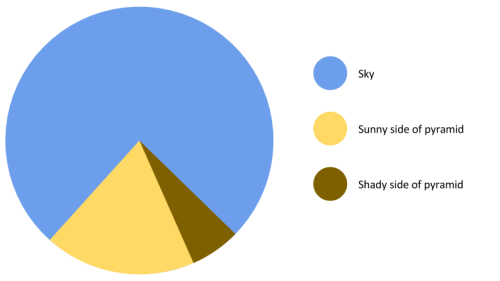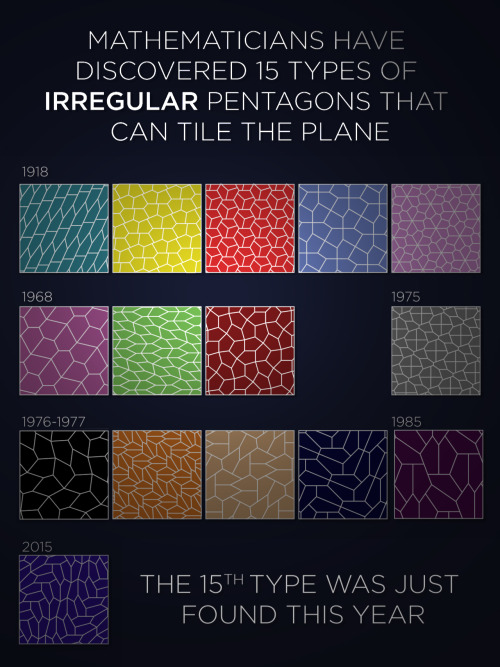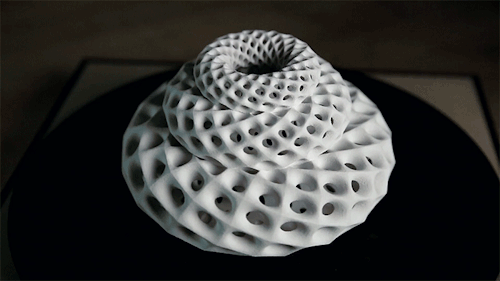(Source: Adam Plouff)



(Source: Adam Plouff)
More Posts from Jupyterjones and Others
Neutron Stars Are Even Weirder Than We Thought
Let’s face it, it’s hard for rapidly-spinning, crushed cores of dead stars NOT to be weird. But we’re only beginning to understand how truly bizarre these objects — called neutron stars — are.

Neutron stars are the collapsed remains of massive stars that exploded as supernovae. In each explosion, the outer layers of the star are ejected into their surroundings. At the same time, the core collapses, smooshing more than the mass of our Sun into a sphere about as big as the island of Manhattan.

Our Neutron star Interior Composition Explorer (NICER) telescope on the International Space Station is working to discover the nature of neutron stars by studying a specific type, called pulsars. Some recent results from NICER are showing that we might have to update how we think about pulsars!
Here are some things we think we know about neutron stars:
Pulsars are rapidly spinning neutron stars ✔︎
Pulsars get their name because they emit beams of light that we see as flashes. Those beams sweep in and out of our view as the star rotates, like the rays from a lighthouse.

Pulsars can spin ludicrously fast. The fastest known pulsar spins 43,000 times every minute. That’s as fast as blender blades! Our Sun is a bit of a slowpoke compared to that — it takes about a month to spin around once.
The beams come from the poles of their strong magnetic fields ✔︎
Pulsars also have magnetic fields, like the Earth and Sun. But like everything else with pulsars, theirs are super-strength. The magnetic field on a typical pulsar is billions to trillions of times stronger than Earth’s!

Near the magnetic poles, the pulsar’s powerful magnetic field rips charged particles from its surface. Some of these particles follow the magnetic field. They then return to strike the pulsar, heating the surface and causing some of the sweeping beams we see.
The beams come from two hot spots… ❌❓✔︎ 🤷🏽
Think of the Earth’s magnetic field — there are two poles, the North Pole and the South Pole. That’s standard for a magnetic field.

On a pulsar, the spinning magnetic field attracts charged particles to the two poles. That means there should be two hot spots, one at the pulsar’s north magnetic pole and the other at its south magnetic pole.
This is where things start to get weird. Two groups mapped a pulsar, known as J0030, using NICER data. One group found that there were two hot spots, as we might have expected. The other group, though, found that their model worked a little better with three (3!) hot spots. Not two.
… that are circular … ❌❓✔︎ 🤷🏽
The particles that cause the hot spots follow the magnetic field lines to the surface. This means they are concentrated at each of the magnetic poles. We expect the magnetic field to appear nearly the same in any direction when viewed from one of the poles. Such symmetry would produce circular hot spots.

In mapping J0030, one group found that one of the hot spots was circular, as expected. But the second spot may be a crescent. The second team found its three spots worked best as ovals.
… and lie directly across from each other on the pulsar ❌❓✔︎ 🤷🏽
Think back to Earth’s magnetic field again. The two poles are on opposite sides of the Earth from each other. When astronomers first modeled pulsar magnetic fields, they made them similar to Earth’s. That is, the magnetic poles would lie at opposite sides of the pulsar.

Since the hot spots happen where the magnetic poles cross the surface of the pulsar, we would expect the beams of light to come from opposite sides of the pulsar.

But, when those groups mapped J0030, they found another surprising characteristic of the spots. All of the hot spots appear in the southern half of the pulsar, whether there were two or three of them.

This also means that the pulsar’s magnetic field is more complicated than our initial models!
J0030 is the first pulsar where we’ve mapped details of the heated regions on its surface. Will others have similarly bizarre-looking hotspots? Will they bring even more surprises? We’ll have to stay tuned to NICER find out!
And check out the video below for more about how this measurement was done.
Make sure to follow us on Tumblr for your regular dose of space: http://nasa.tumblr.com.

We Need Your Help to Find STEVE
Glowing in mostly purple and green colors, a newly discovered celestial phenomenon is sparking the interest of scientists, photographers and astronauts. The display was initially discovered by a group of citizen scientists who took pictures of the unusual lights and playfully named them “Steve.”
When scientists got involved and learned more about these purples and greens, they wanted to keep the name as an homage to its initial name and citizen science discoverers. Now it is STEVE, short for Strong Thermal Emission Velocity Enhancement.

Credit: ©Megan Hoffman
STEVE occurs closer to the equator than where most aurora appear – for example, Southern Canada – in areas known as the sub-auroral zone. Because auroral activity in this zone is not well researched, studying STEVE will help scientists learn about the chemical and physical processes going on there. This helps us paint a better picture of how Earth’s magnetic fields function and interact with charged particles in space. Ultimately, scientists can use this information to better understand the space weather near Earth, which can interfere with satellites and communications signals.

Want to become a citizen scientist and help us learn more about STEVE? You can submit your photos to a citizen science project called Aurorasaurus, funded by NASA and the National Science Foundation. Aurorasaurus tracks appearances of auroras – and now STEVE – around the world through reports and photographs submitted via a mobile app and on aurorasaurus.org.
Here are six tips from what we have learned so far to help you spot STEVE:
1. STEVE is a very narrow arc, aligned East-West, and extends for hundreds or thousands of miles.

Credit: ©Megan Hoffman
2. STEVE mostly emits light in purple hues. Sometimes the phenomenon is accompanied by a short-lived, rapidly evolving green picket fence structure (example below).

Credit: ©Megan Hoffman
3. STEVE can last 20 minutes to an hour.
4. STEVE appears closer to the equator than where normal – often green – auroras appear. It appears approximately 5-10° further south in the Northern hemisphere. This means it could appear overhead at latitudes similar to Calgary, Canada. The phenomenon has been reported from the United Kingdom, Canada, Alaska, northern US states, and New Zealand.

5. STEVE has only been spotted so far in the presence of an aurora (but auroras often occur without STEVE). Scientists are investigating to learn more about how the two phenomena are connected.
6. STEVE may only appear in certain seasons. It was not observed from October 2016 to February 2017. It also was not seen from October 2017 to February 2018.

Credit: ©Megan Hoffman
STEVE (and aurora) sightings can be reported at www.aurorasaurus.org or with the Aurorasaurus free mobile apps on Android and iOS. Anyone can sign up, receive alerts, and submit reports for free.
Make sure to follow us on Tumblr for your regular dose of space: http://nasa.tumblr.com.




Raspberry Multiverse
Stephen Hawking’s Grand design is leading to a non symmetric multiverse. However there is reason to suggest a full symmetric multiverse with point symmetry at the centre of a raspberry shaped pulsating bubble multiverse. For an entangled multiverse, each quantum should have its own 12 fold entanglement relation to all 12 opposite (anti) quantums, each located inside one of the 12 universes. The result is called: Poincaré dodecahedral space symmetry. (see also below: B.F.Roukema) A dodecahedron is also called “Buckyball” An other evidence for space symmetry and the centre of the multiverse is the so called DARK FLOW. Dark flow seems to be found at the edge of the visible universe!! There the “dark flow centre is represented by a so called "Pitch of spacetime”








Big math news! It’s been thirty years since mathematicians last found a convex pentagon that could “tile the plane.” The latest discovery (by Jennifer McLoud-Mann, Casey Mann, and David Von Derau) was published earlier this month. Full story.
Eclipse Across America
August 21, 2017, the United States experienced a solar eclipse!

An eclipse occurs when the Moon temporarily blocks the light from the Sun. Within the narrow, 60- to 70-mile-wide band stretching from Oregon to South Carolina called the path of totality, the Moon completely blocked out the Sun’s face; elsewhere in North America, the Moon covered only a part of the star, leaving a crescent-shaped Sun visible in the sky.

During this exciting event, we were collecting your images and reactions online.
Here are a few images of this celestial event…take a look:

This composite image, made from 4 frames, shows the International Space Station, with a crew of six onboard, as it transits the Sun at roughly five miles per second during a partial solar eclipse from, Northern Cascades National Park in Washington. Onboard as part of Expedition 52 are: NASA astronauts Peggy Whitson, Jack Fischer, and Randy Bresnik; Russian cosmonauts Fyodor Yurchikhin and Sergey Ryazanskiy; and ESA (European Space Agency) astronaut Paolo Nespoli.
Credit: NASA/Bill Ingalls

The Bailey’s Beads effect is seen as the moon makes its final move over the sun during the total solar eclipse on Monday, August 21, 2017 above Madras, Oregon.
Credit: NASA/Aubrey Gemignani

This image from one of our Twitter followers shows the eclipse through tree leaves as crescent shaped shadows from Seattle, WA.
Credit: Logan Johnson

“The eclipse in the palm of my hand”. The eclipse is seen here through an indirect method, known as a pinhole projector, by one of our followers on social media from Arlington, TX.
Credit: Mark Schnyder

Through the lens on a pair of solar filter glasses, a social media follower captures the partial eclipse from Norridgewock, ME.
Credit: Mikayla Chase

While most of us watched the eclipse from Earth, six humans had the opportunity to view the event from 250 miles above on the International Space Station. European Space Agency (ESA) astronaut Paolo Nespoli captured this image of the Moon’s shadow crossing America.
Credit: Paolo Nespoli

This composite image shows the progression of a partial solar eclipse over Ross Lake, in Northern Cascades National Park, Washington. The beautiful series of the partially eclipsed sun shows the full spectrum of the event.
Credit: NASA/Bill Ingalls
In this video captured at 1,500 frames per second with a high-speed camera, the International Space Station, with a crew of six onboard, is seen in silhouette as it transits the sun at roughly five miles per second during a partial solar eclipse, Monday, Aug. 21, 2017 near Banner, Wyoming.
Credit: NASA/Joel Kowsky
To see more images from our NASA photographers, visit: https://www.flickr.com/photos/nasahqphoto/albums/72157685363271303
Make sure to follow us on Tumblr for your regular dose of space: http://nasa.tumblr.com

Planetary Frequencies.

The simple harmonic oscillator
Anonymous asked: Please explain the intuition of solving the SHM equation.
Okay Anon! Here you go, this is my rendition.
The problem
You have a mass suspended on a spring. We want to know where the mass will be at any instant of time.
Describe the motion of the mass

The physical solution
Now before we get on to the math, let us first visualize the motion by attaching a spray paint bottle as the mass.

Oh, wait that seems like a function that we are familiar with - The sinusoid.

Without even having to write down a single equation, we have found out the solution to our problem. The motion that is traced by the mass is a sinusoid.
But what do I mean by a sinusoid ?
If you took the plotted paper and tried to create that function with the help of sum of polynomials i.e x, x2, x3 … Now you this what it would like :

By taking an infinite of these polynomial sums you get the function Since this series of polynomial occurs a lot, its given the name - sine.

I hope this shed some light on the intuition of the SHM equation. Have fun!



Fibonacci Sculptures - Part II
These are 3-D printed sculptures designed to animate when spun under a strobe light. The placement of the appendages is determined by the same method nature uses in pinecones and sunflowers. The rotation speed is synchronized to the strobe so that one flash occurs every time the sculpture turns 137.5º—the golden angle. If you count the number of spirals on any of these sculptures you will find that they are always Fibonacci numbers.
© John Edmark

-
 zzquil liked this · 1 year ago
zzquil liked this · 1 year ago -
 270828 liked this · 2 years ago
270828 liked this · 2 years ago -
 cutequius liked this · 3 years ago
cutequius liked this · 3 years ago -
 sarasa-cat reblogged this · 3 years ago
sarasa-cat reblogged this · 3 years ago -
 valtessa reblogged this · 3 years ago
valtessa reblogged this · 3 years ago -
 twelvesblades reblogged this · 3 years ago
twelvesblades reblogged this · 3 years ago -
 thingsstuffnuances reblogged this · 3 years ago
thingsstuffnuances reblogged this · 3 years ago -
 inner8andtheisms reblogged this · 3 years ago
inner8andtheisms reblogged this · 3 years ago -
 thingsstuffnuances liked this · 3 years ago
thingsstuffnuances liked this · 3 years ago -
 ingridverse reblogged this · 3 years ago
ingridverse reblogged this · 3 years ago -
 ingridverse liked this · 3 years ago
ingridverse liked this · 3 years ago -
 nineprotons reblogged this · 3 years ago
nineprotons reblogged this · 3 years ago -
 xxplotbunnylovexx reblogged this · 3 years ago
xxplotbunnylovexx reblogged this · 3 years ago -
 xxplotbunnylovexx liked this · 3 years ago
xxplotbunnylovexx liked this · 3 years ago -
 matovilka liked this · 3 years ago
matovilka liked this · 3 years ago -
 sarasa-cat liked this · 3 years ago
sarasa-cat liked this · 3 years ago -
 queen-of-sensible-castle reblogged this · 3 years ago
queen-of-sensible-castle reblogged this · 3 years ago -
 queen-of-sensible-castle liked this · 3 years ago
queen-of-sensible-castle liked this · 3 years ago -
 thessalian reblogged this · 3 years ago
thessalian reblogged this · 3 years ago -
 eorzeanflowers liked this · 3 years ago
eorzeanflowers liked this · 3 years ago -
 marimbachica reblogged this · 3 years ago
marimbachica reblogged this · 3 years ago -
 marimbachica liked this · 3 years ago
marimbachica liked this · 3 years ago -
 thecat-inthehat reblogged this · 3 years ago
thecat-inthehat reblogged this · 3 years ago -
 jaffaarchfiend reblogged this · 3 years ago
jaffaarchfiend reblogged this · 3 years ago -
 jaffaarchfiend liked this · 3 years ago
jaffaarchfiend liked this · 3 years ago -
 partialdignity liked this · 3 years ago
partialdignity liked this · 3 years ago -
 dragons-bones reblogged this · 3 years ago
dragons-bones reblogged this · 3 years ago -
 abacusglitchtrigger reblogged this · 3 years ago
abacusglitchtrigger reblogged this · 3 years ago -
 myymsie liked this · 3 years ago
myymsie liked this · 3 years ago -
 dragons-bones liked this · 3 years ago
dragons-bones liked this · 3 years ago -
 ffxiv-swarm reblogged this · 3 years ago
ffxiv-swarm reblogged this · 3 years ago -
 dinahgcc liked this · 3 years ago
dinahgcc liked this · 3 years ago -
 las-manos-sucias reblogged this · 4 years ago
las-manos-sucias reblogged this · 4 years ago -
 voidandlight reblogged this · 5 years ago
voidandlight reblogged this · 5 years ago -
 522735963 liked this · 5 years ago
522735963 liked this · 5 years ago -
 saikkunen liked this · 5 years ago
saikkunen liked this · 5 years ago -
 bitegore liked this · 5 years ago
bitegore liked this · 5 years ago -
 honestlyvan reblogged this · 5 years ago
honestlyvan reblogged this · 5 years ago -
 the-quiet-gentleman liked this · 5 years ago
the-quiet-gentleman liked this · 5 years ago -
 go-wind-stuff reblogged this · 6 years ago
go-wind-stuff reblogged this · 6 years ago -
 yosoyelcosmos reblogged this · 6 years ago
yosoyelcosmos reblogged this · 6 years ago -
 yosoyelcosmos liked this · 6 years ago
yosoyelcosmos liked this · 6 years ago -
 siemprefuistetu reblogged this · 6 years ago
siemprefuistetu reblogged this · 6 years ago -
 theanxioustudent reblogged this · 6 years ago
theanxioustudent reblogged this · 6 years ago -
 brecase liked this · 6 years ago
brecase liked this · 6 years ago